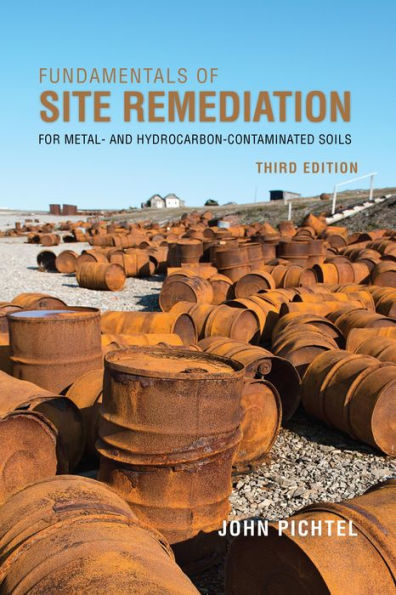This new edition discusses chemical and engineering principles as they apply to the cleanup and removal of hazardous chemicals from soil and groundwater. There is emphasis on environmental chemistry, soil science, microbiology, and plant science.
The first part of the book provides an overview of the recent history of environmental contamination and the formulation of relevant regulations for hazardous waste site remediation. This part also provides a background for several salient aspects of site remediation (e.g., soil science, the site assessment process).
The second part of the book examines field remediation technologies, including phytoremediation, bioremediation, and several chemical and physical technologies. Theory of operation, practical considerations, and possible environmental impacts and other consequences of their use are discussed.
Covers both metal- and hydrocarbon-based contamination and remediationMany competitors only address one industry, or source, of contamination—this title provides an overview of all of the sources.Presents both the assessment of contaminated sites and the technologies currently available for environmental cleanup Effective for use in field situations and for academic (i.e., university course) use.Two new chapters: (i) the use of nanomaterials for remediation of contaminated soil and water; and (ii) revegetation of severely disturbed sites.
1133675736
The first part of the book provides an overview of the recent history of environmental contamination and the formulation of relevant regulations for hazardous waste site remediation. This part also provides a background for several salient aspects of site remediation (e.g., soil science, the site assessment process).
The second part of the book examines field remediation technologies, including phytoremediation, bioremediation, and several chemical and physical technologies. Theory of operation, practical considerations, and possible environmental impacts and other consequences of their use are discussed.
Covers both metal- and hydrocarbon-based contamination and remediationMany competitors only address one industry, or source, of contamination—this title provides an overview of all of the sources.Presents both the assessment of contaminated sites and the technologies currently available for environmental cleanup Effective for use in field situations and for academic (i.e., university course) use.Two new chapters: (i) the use of nanomaterials for remediation of contaminated soil and water; and (ii) revegetation of severely disturbed sites.
Fundamentals of Site Remediation
This new edition discusses chemical and engineering principles as they apply to the cleanup and removal of hazardous chemicals from soil and groundwater. There is emphasis on environmental chemistry, soil science, microbiology, and plant science.
The first part of the book provides an overview of the recent history of environmental contamination and the formulation of relevant regulations for hazardous waste site remediation. This part also provides a background for several salient aspects of site remediation (e.g., soil science, the site assessment process).
The second part of the book examines field remediation technologies, including phytoremediation, bioremediation, and several chemical and physical technologies. Theory of operation, practical considerations, and possible environmental impacts and other consequences of their use are discussed.
Covers both metal- and hydrocarbon-based contamination and remediationMany competitors only address one industry, or source, of contamination—this title provides an overview of all of the sources.Presents both the assessment of contaminated sites and the technologies currently available for environmental cleanup Effective for use in field situations and for academic (i.e., university course) use.Two new chapters: (i) the use of nanomaterials for remediation of contaminated soil and water; and (ii) revegetation of severely disturbed sites.
The first part of the book provides an overview of the recent history of environmental contamination and the formulation of relevant regulations for hazardous waste site remediation. This part also provides a background for several salient aspects of site remediation (e.g., soil science, the site assessment process).
The second part of the book examines field remediation technologies, including phytoremediation, bioremediation, and several chemical and physical technologies. Theory of operation, practical considerations, and possible environmental impacts and other consequences of their use are discussed.
Covers both metal- and hydrocarbon-based contamination and remediationMany competitors only address one industry, or source, of contamination—this title provides an overview of all of the sources.Presents both the assessment of contaminated sites and the technologies currently available for environmental cleanup Effective for use in field situations and for academic (i.e., university course) use.Two new chapters: (i) the use of nanomaterials for remediation of contaminated soil and water; and (ii) revegetation of severely disturbed sites.
130.5
In Stock
5
1

Fundamentals of Site Remediation
476
Fundamentals of Site Remediation
476eBook (Third Edition)
$130.50
Related collections and offers
130.5
In Stock

Product Details
| ISBN-13: | 9781641433143 |
|---|---|
| Publisher: | Bloomsbury Publishing |
| Publication date: | 07/31/2019 |
| Sold by: | Barnes & Noble |
| Format: | eBook |
| Pages: | 476 |
| File size: | 127 MB |
| Note: | This product may take a few minutes to download. |
About the Author
From the B&N Reads Blog
